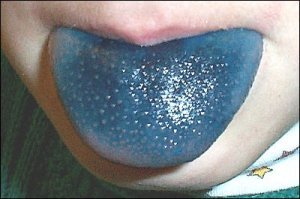 Disgust is an emotion experienced – either actually or in the imagination – through the senses. Charles Darwin, for example, wrote: “I am disgusted by the stench and sight of that rotting viscera.” Some anthropologists suggest that feeling disgust was an adaptive survival mechanism in the course of our evolution. It may be maladaptive today, however, as it can result in fears of those who are different from us, sexual prejudices, and other irrational behaviors. Says anthropologist Dan Fessler:
Disgust is an emotion experienced – either actually or in the imagination – through the senses. Charles Darwin, for example, wrote: “I am disgusted by the stench and sight of that rotting viscera.” Some anthropologists suggest that feeling disgust was an adaptive survival mechanism in the course of our evolution. It may be maladaptive today, however, as it can result in fears of those who are different from us, sexual prejudices, and other irrational behaviors. Says anthropologist Dan Fessler:
We often respond to today’s world with yesterday’s adaptations. … That’s why, for instance, we’re more afraid of snakes than cars, even though we’re much more likely to die today as a result of an encounter with a car than a reptile.
Do bitter tastes increase moral disgust
Psychologists have asked whether there’s a connection between feelings of physical disgust and a sense of moral disgust. In an experiment designed to explore that question, test subjects were given three different drinks – one sweet, one bitter, and water. They were then shown morally questionable scenarios (ranging from second cousins engaging in consensual sex to a man eating his dead dog) and asked to rate how morally questionable they found these scenarios. Participants were also asked about their political orientation.
The results? Those who drank something bitter rated the scenarios 27 per cent more disgusting than those who drank water. In addition, political conservatives were more strongly affected by bitter tastes than liberals.
The psychologists’ conclusion: “[E]mbodied gustatory experiences may affect moral processing more than previously thought.” Or, as New Scientist relates:
Although the mechanisms linking taste and behaviour are not yet clear, the authors [of the study] ask whether jurors should avoid bitter tastes and whether food preferences play a role in shaping political ideals.
Hmmm. Maybe we could create more political harmony by feeding conservatives more cake. Read more

















